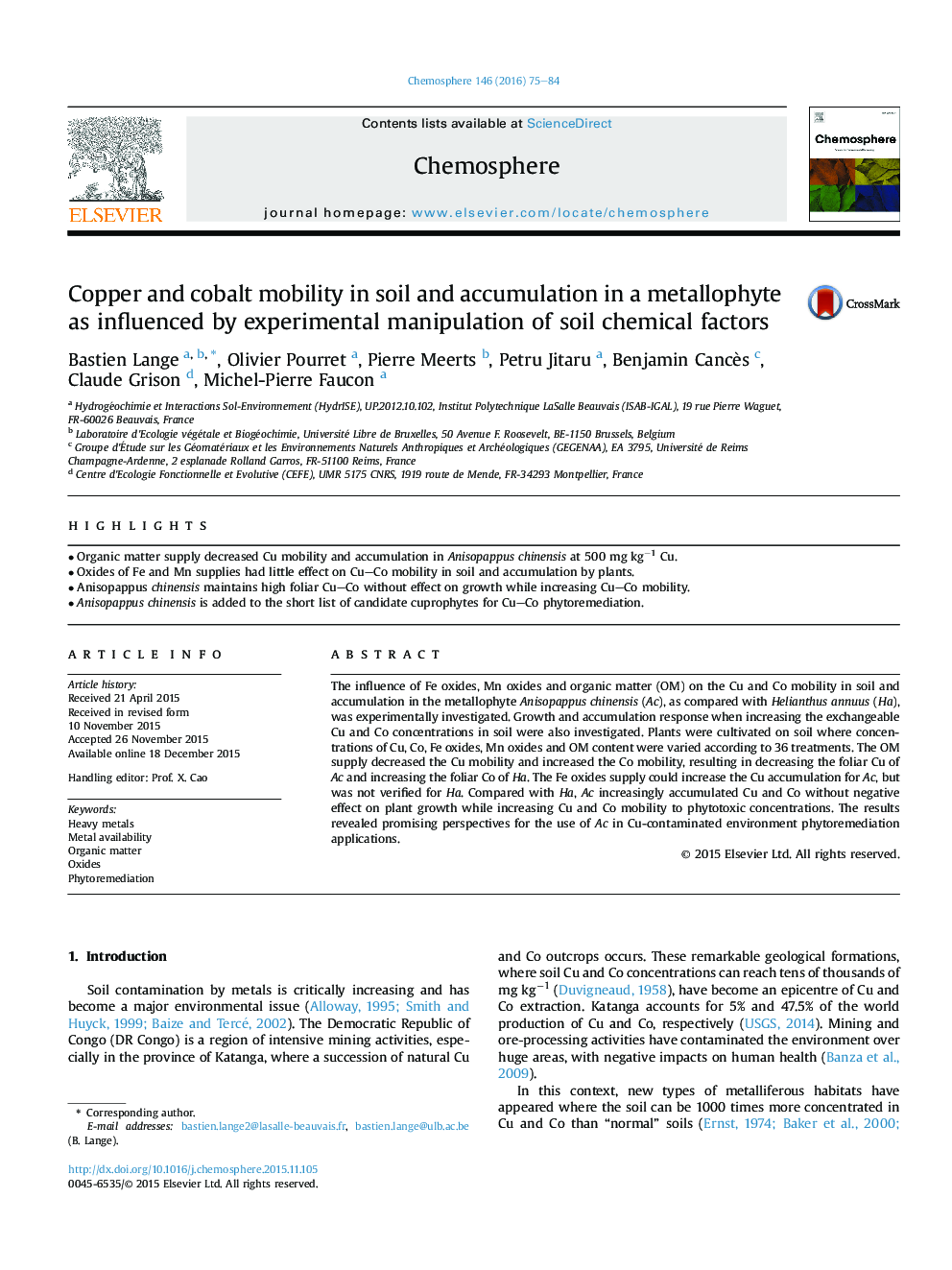| کد مقاله | کد نشریه | سال انتشار | مقاله انگلیسی | نسخه تمام متن |
|---|---|---|---|---|
| 4407929 | 1618825 | 2016 | 10 صفحه PDF | دانلود رایگان |
• Organic matter supply decreased Cu mobility and accumulation in Anisopappus chinensis at 500 mg kg−1 Cu.
• Oxides of Fe and Mn supplies had little effect on Cu–Co mobility in soil and accumulation by plants.
• Anisopappus chinensis maintains high foliar Cu–Co without effect on growth while increasing Cu–Co mobility.
• Anisopappus chinensis is added to the short list of candidate cuprophytes for Cu–Co phytoremediation.
The influence of Fe oxides, Mn oxides and organic matter (OM) on the Cu and Co mobility in soil and accumulation in the metallophyte Anisopappus chinensis (Ac), as compared with Helianthus annuus (Ha), was experimentally investigated. Growth and accumulation response when increasing the exchangeable Cu and Co concentrations in soil were also investigated. Plants were cultivated on soil where concentrations of Cu, Co, Fe oxides, Mn oxides and OM content were varied according to 36 treatments. The OM supply decreased the Cu mobility and increased the Co mobility, resulting in decreasing the foliar Cu of Ac and increasing the foliar Co of Ha. The Fe oxides supply could increase the Cu accumulation for Ac, but was not verified for Ha. Compared with Ha, Ac increasingly accumulated Cu and Co without negative effect on plant growth while increasing Cu and Co mobility to phytotoxic concentrations. The results revealed promising perspectives for the use of Ac in Cu-contaminated environment phytoremediation applications.
Journal: Chemosphere - Volume 146, March 2016, Pages 75–84
